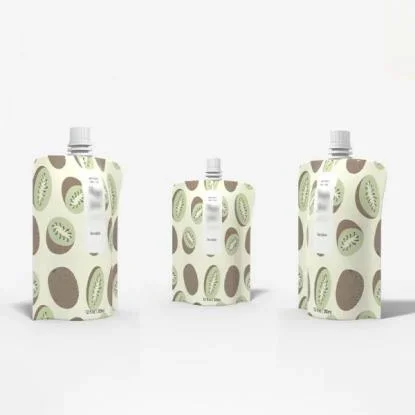Choosing the right beverage packaging bag is crucial for ensuring the quality, safety, and appeal of your product. With a wide range of options available in the market, selecting the most suitable packaging can be overwhelming. , as a leader in the industry, focuses on providing innovative and environmentally friendly packaging solutions. Its stand out from many brands for their excellent design, durability and sustainability. These beverage packaging bags are not only made of high-quality materials to ensure the freshness and safety of beverages during transportation and storage, but also incorporate advanced sealing technology to effectively prevent leakage and deterioration. Whether it is juice, coffee or tea drinks, Sunkey Packaging's beverage packaging bags can be perfectly adapted to meet the market's high standards for beauty, practicality and environmental protection.

1. Understanding Your Beverage Type
1.1 Type and Composition
The first step in selecting a packaging bag is understanding the type and composition of your beverage. Factors such as acidity, viscosity, and ingredient sensitivity play a vital role in determining the material and design of the packaging. For instance, acidic beverages require packaging that can withstand corrosion, while dairy products might need special lining to prevent spoilage.
1.2 Shelf Life
Consider the intended shelf life of your beverage. Different packaging materials offer varying degrees of oxygen and moisture barrier properties, which can significantly affect the freshness and longevity of your product. For extended shelf life, opt for packaging with enhanced barrier properties.
2. Material Selection
2.1 Common Materials
-
Polyethylene (PE): Cost-effective and widely used for its flexibility and moisture resistance.
-
Polypropylene (PP): Offers better clarity and stiffness compared to PE.
-
Aluminum Foil: Provides excellent oxygen and light barrier properties, essential for sensitive beverages.
-
Polyethylene Terephthalate (PET): Known for its strength, clarity, and recyclability.
-
Multilayer Films: Combine different materials to offer a balance of properties tailored to specific beverage needs.
2.2 Sustainability
With increasing consumer awareness about environmental impact, choosing sustainable packaging materials is crucial. Consider biodegradable, recyclable, or compostable options. Materials like PLA (polylactic acid) and rPET (recycled PET) are gaining popularity for their eco-friendly attributes.
3. Package Design and Features
3.1 Size and Shape
The size and shape of the packaging bag should align with your brand identity, distribution channels, and consumer preferences. Consider ease of handling, stacking, and storage when designing the package.
3.2 Spout and Cap Design
The spout and cap design are critical for user experience and product integrity. Choose a design that is leak-proof, easy to open and close, and suitable for the beverage's viscosity. Consider ergonomic factors to ensure consumer satisfaction.
3.3 Labeling and Branding
Your packaging is an extension of your brand. Ensure that the label design is eye-catching, informative, and compliant with regulations. High-quality printing and finishes can enhance the overall appeal and perception of your product.
4. Technical Considerations
4.1 Sealing Technology
The sealing method, whether heat-sealed, induction-sealed, or otherwise, should be compatible with the packaging material and ensure tamper evidence and leakage prevention.
4.2 Filling and Packaging Machinery
Ensure that the chosen packaging bag is compatible with your filling and packaging machinery. Consider the bag's format (e.g., stand-up pouch, flat bottom pouch) and how it interacts with the equipment to maintain efficiency and reduce waste.
4.3 Testing and Compliance
Before finalizing your packaging choice, conduct tests to verify its performance against your beverage's specific requirements. Ensure compliance with relevant food safety regulations and standards.
5. Cost and Scalability
5.1 Cost Analysis
Evaluate the cost-effectiveness of different packaging options, considering both initial investment and ongoing expenses. Balance quality, features, and pricing to ensure profitability.
5.2 Scalability
As your business grows, your packaging needs may change. Choose a supplier that offers scalable solutions, ensuring that you can adapt your packaging without significant disruptions.
Conclusion
Selecting the right beverage packaging bag involves a thorough understanding of your product, careful consideration of material and design options, and attention to technical and economic factors. By following this professional guide, you can make an informed decision that enhances your product's appeal, ensures quality and safety, and supports your brand's growth. Remember, the right packaging is not just a container; it's a critical element of your brand's story and consumer experience.